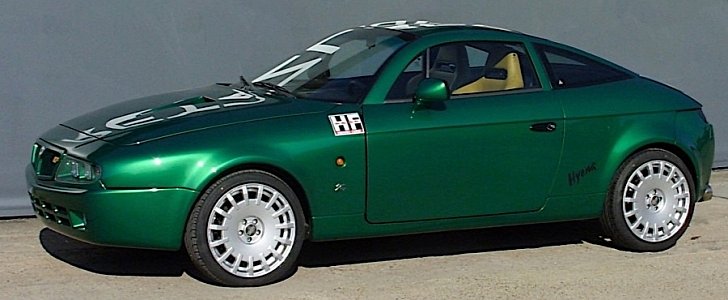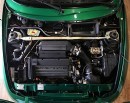There is presently on the Old Continent a car brand that is struggling to make ends meet. The Fiat-owned Lancia is nearly at the bottom of the pit, but there were times when things were different.
One of the best cars Lancia ever produced was the Delta. Sold for both private and track use, the line started in 1979 and soon, thanks to the countless versions it received, became one of the most important names in the World Rally Championships (WRC).
One of the derivatives that allowed the model to climb the ladder to success was the HF Integrale (and its Evoluzione and Evoluzione II successors), a four-wheel-drive hot hatch that managed to score 46 WRC victories and win the Constructors Championship six times in a row between 1987 and 1992.
But the 210 bhp power of the car’s engine and its immense WRC success was not enough for Dutch classic car builder and collector Paul V.J Koot, who wanted an even more extreme machine, shaped differently than the hatchback.
The man wanted a coupe, so he pitched the idea to coachbuilder Zagato, who immediately said yes. In no time (1992), the team had come up with a prototype called Hyena. The car looked great, so Koot decided to ask Fiat to put into into production. The Italians immediately said no, for reasons known only to them.
Despite Fiat’s refusal, the idea didn’t die out, and Koot got his hands on a bunch of HF Integrales, which were then shipped to Zagato,
The coachbuilder handled the bodywork and more, and what came off the assembly lines was fitted with a double-bubble roof, aluminum bodywork, and custom interior. Power of the 2.0-liter 4-cylinder engine was increased to 250 hp, and since it moved a build that was 120 kg lighter than a stock Integrale, acceleration time was improved to 5.4 seconds.
Koot planned to have 75 Hyenas made, but in the end just 24 were finished. One of them, the ninth to roll off the lines, is now for sale on the Silverstone Auctions website, with just 9,500 km (5,900 miles) on the odometer.
One of the derivatives that allowed the model to climb the ladder to success was the HF Integrale (and its Evoluzione and Evoluzione II successors), a four-wheel-drive hot hatch that managed to score 46 WRC victories and win the Constructors Championship six times in a row between 1987 and 1992.
But the 210 bhp power of the car’s engine and its immense WRC success was not enough for Dutch classic car builder and collector Paul V.J Koot, who wanted an even more extreme machine, shaped differently than the hatchback.
The man wanted a coupe, so he pitched the idea to coachbuilder Zagato, who immediately said yes. In no time (1992), the team had come up with a prototype called Hyena. The car looked great, so Koot decided to ask Fiat to put into into production. The Italians immediately said no, for reasons known only to them.
Despite Fiat’s refusal, the idea didn’t die out, and Koot got his hands on a bunch of HF Integrales, which were then shipped to Zagato,
The coachbuilder handled the bodywork and more, and what came off the assembly lines was fitted with a double-bubble roof, aluminum bodywork, and custom interior. Power of the 2.0-liter 4-cylinder engine was increased to 250 hp, and since it moved a build that was 120 kg lighter than a stock Integrale, acceleration time was improved to 5.4 seconds.
Koot planned to have 75 Hyenas made, but in the end just 24 were finished. One of them, the ninth to roll off the lines, is now for sale on the Silverstone Auctions website, with just 9,500 km (5,900 miles) on the odometer.



















